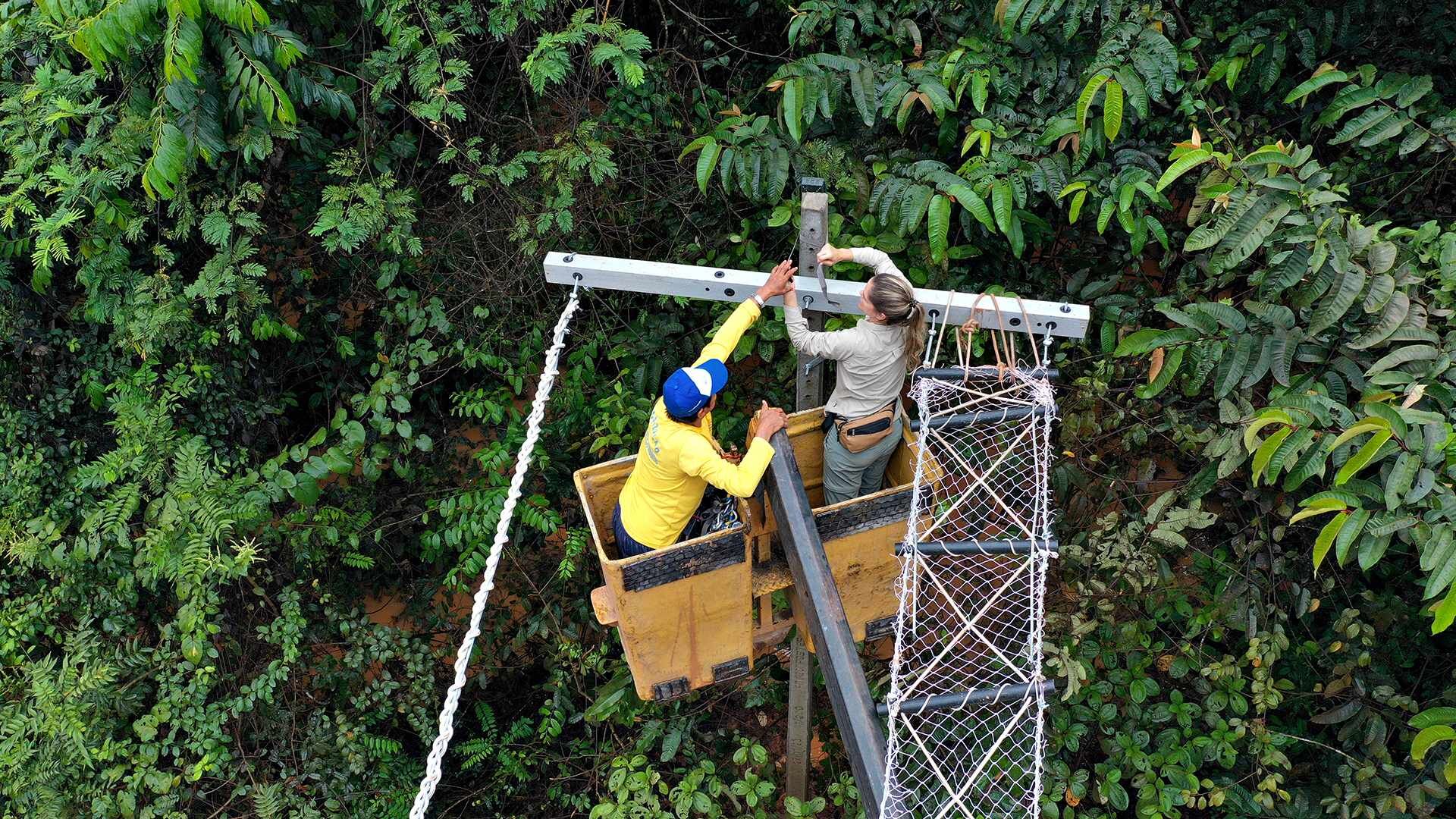We hypothesize that differential use of the two bridge types will be influenced by locomotor strategies (quadrupedal, suspensory, or vertical clinging and leaping) and body size of arboreal mammals.
All Artificial Canopy Bridges (ACB) are being monitored with two camera traps on the top. Both operates in video mode, starting immediately after installation (June 2022).
Using methods of arboreal camera trapping developed by Tremaine Gregory and her team, one camera will be installed on one side of the ACB, pointing towards it and recording animal use. The other camera will face away from the road, at the level of the forest canopy, recording animals that approach the ACB. In conjunction with the data from the other camera, these records will allow for the calculation of an acceptance ratio for each ACB and test for potential differences between the two designs.
The acceptance rate will be measured as the total number of individuals that approached the bridge and did or did not cross. Acceptance rates by species in response to certain crossing structure attributes has been used previously to evaluate effectiveness.


